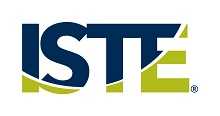Tips to Build Your PLN
This month an article that I co-wrote was published on eSchool News. The Article is titled 7 Tips for Teachers Building Collaborate, Fearless PLNs. To view the article online: http://www.eschoolnews.com/2015/03/16/teachers-fearless-plns-547/
 Ed. note: Innovation In Action is a new monthly column from the International Society of Technology in Education focused on exemplary practices in education.
Ed. note: Innovation In Action is a new monthly column from the International Society of Technology in Education focused on exemplary practices in education.
 Research indicates that nearly 50 percent of educators will leave the field within the first five years of entering a classroom. This is an astounding number that costs the U.S. more than $2 billion annually. Why the high burnout rate? Many cite isolation and lack of support as reasons for exiting the field. Sometimes new teachers are nervous to admit they may be struggling. By helping educators build strong connections to others, both within their buildings and around the world, we can begin to create more stability in the profession and refresh our passion for education.
Research indicates that nearly 50 percent of educators will leave the field within the first five years of entering a classroom. This is an astounding number that costs the U.S. more than $2 billion annually. Why the high burnout rate? Many cite isolation and lack of support as reasons for exiting the field. Sometimes new teachers are nervous to admit they may be struggling. By helping educators build strong connections to others, both within their buildings and around the world, we can begin to create more stability in the profession and refresh our passion for education.
7 tips for teachers building collaborative, fearless PLNs
Don’t be daunted! Try these best practices for finding and collaborating with fellow educators
 Ed. note: Innovation In Action is a new monthly column from the International Society of Technology in Education focused on exemplary practices in education.
Ed. note: Innovation In Action is a new monthly column from the International Society of Technology in Education focused on exemplary practices in education. Research indicates that nearly 50 percent of educators will leave the field within the first five years of entering a classroom. This is an astounding number that costs the U.S. more than $2 billion annually. Why the high burnout rate? Many cite isolation and lack of support as reasons for exiting the field. Sometimes new teachers are nervous to admit they may be struggling. By helping educators build strong connections to others, both within their buildings and around the world, we can begin to create more stability in the profession and refresh our passion for education.
Research indicates that nearly 50 percent of educators will leave the field within the first five years of entering a classroom. This is an astounding number that costs the U.S. more than $2 billion annually. Why the high burnout rate? Many cite isolation and lack of support as reasons for exiting the field. Sometimes new teachers are nervous to admit they may be struggling. By helping educators build strong connections to others, both within their buildings and around the world, we can begin to create more stability in the profession and refresh our passion for education.
Teachers are natural collaborators. From the school hallways to what could be called today’s water cooler—social media—teachers love to share and discuss what’s working, what isn’t, and the finer points of why or why not.
Collaboration is very much a process. It’s about ideas and problem solving and some trial and error, with reflection playing a critical role. To support this process, we will unravel the process of building a Professional Learning Network of fellow educators, and how it can remove isolation and improve your professional practice.
1. Identify a mentorEvery teacher was once a new teacher and experienced the emotions of learning about their students, school, pedagogy, and all that paperwork. Remember that any trepidation you may have about your practice have most likely come from questions posed by another educator in your building. Identifying a mentor or key collaborator within your immediate environment should be your first step. Find someone you can work with, bounce ideas off, and say, “No, that won’t work.” This doesn’t have to be a formal process, but instead should develop as more of an ongoing conversation, an opportunity to reach out and just ask questions.
2. Build a PLN outside of your buildingAs important as it is to have a go-to in the building it is equally important to have other points of view and opinions. Extend your PLN from your local mentor to the entire globe. PLNs allow you to use technology to pull ideas and resources to you as well as push out your thoughts and ideas. There are a multitude of resources available to begin building a professional learning network. Here are some of our favorites:
- Twitter. If you have not participated in Twitter Chats these are fantastic ways to connect at a deep level. There are hundreds of Twitter chats taking place at scheduled times. A schedule for Twitter Chats can be found here. If you are new to chats, you can start by passively reading them without getting involved. Follow people in chats specific to your interests and look to see who they follow for additional ideas.
- Teachability is a social network developed by Pearson. Find “Communities” to follow where you can ask questions, share breakthroughs, and respond to others. There is a community specifically for new teachers.
- Edmodo. While many educators use Edmodo as a Learning Management System for their students, Edmodo offers much more. There are communities for educators to share and ask questions, and communities for topics including Common Core, professional development, and careers and tech.
- Google+ not only has communities available for you to join, but gives you the ability to create your own.
- Pinterest is a place to connect with others, learn from others, and share your own content in a visually appealing format.
3. Grow in stagesAs we stated earlier developing a PLN is a process. There are several stages that you will experience as you develop your very own personalized learning network. Jeff Urtecht wrote a great blog post of his interpretation of the stages: immersion, evaluation, know-it-all, perspective, and balance. Finally, share your ideas. Ideas spread around the globe like wildfire and it is a confidence boost when someone else benefits from your ideas (or in turn hears how you benefited from theirs).
4. Approach PLNs with curiosity
Look at your PLN as a source of inspiration to connect ideas. Life is not linear; we move side to side, one step back for two steps forward. Some of the biggest leaps forward can come from a setback (consider the pacemaker and Post Its). As you stay informed and build your PLN, remember that inspiration and ideas do not emanate from education related networks alone. Inspiration comes from many different places. For example, we like looking at Kickstarter projects or Kiva for real world activities to incorporate into our classrooms. It’s about being inquisitive.
5. ShareTake time to share and ask others to work with you and to innovate, reflect and share together. This seems to be the most difficult step for some. Reach out and ask someone if they’d like to work on a project. Equally important is giving back to your PLN and your community. Consider presenting at local, state, and national conferences. ISTE’s Annual Conference is a wonderful opportunity, but so are state affiliate conferences. ISTE affiliates are in all 50 states, and around the world, and provide wonderful opportunities to connect and collaborate.
6. Collaborating means failing sometimesOur final thought is about failure. Too many times people are afraid to fail. Collaborating on new ideas, new projects, or new strategies will involve some amount of failure. Reflecting on failures and successes only improves your practice. Failure is not the end of a project, but a learning opportunity. Your PLN is not only a place for inspiration and making connections, but sharing what you’ve learned. You might be surprised how much support and feedback you get!
7. Stick with itCollaboration can be complex. The process can be time consuming and it takes effort to establish and build connections, but the rewards of new relationships and professional growth are well worth the effort. Collaboration is a 21st century skill we’re developing in our students. It’s important for them and it’s important for us. We need to be their role model and mentor and to continue to model a positive digital presence for them. Coincidentally, the collaboration for this article stemmed out of a casual long distance conversation between two friends and colleagues. See how easily that can happen?
Randy Hansen is Program Chair, Instructional Technology at University of Maryland University College and President, Teacher Education Network, International Society for Technology in Education.
Nicole Zumpano is a technology coach in Chicago Public Schools and an Adjunct Professor at Dominican University. Connect with the authors on Twitter @RandHansen and @nmzumpano.



Comments
Post a Comment